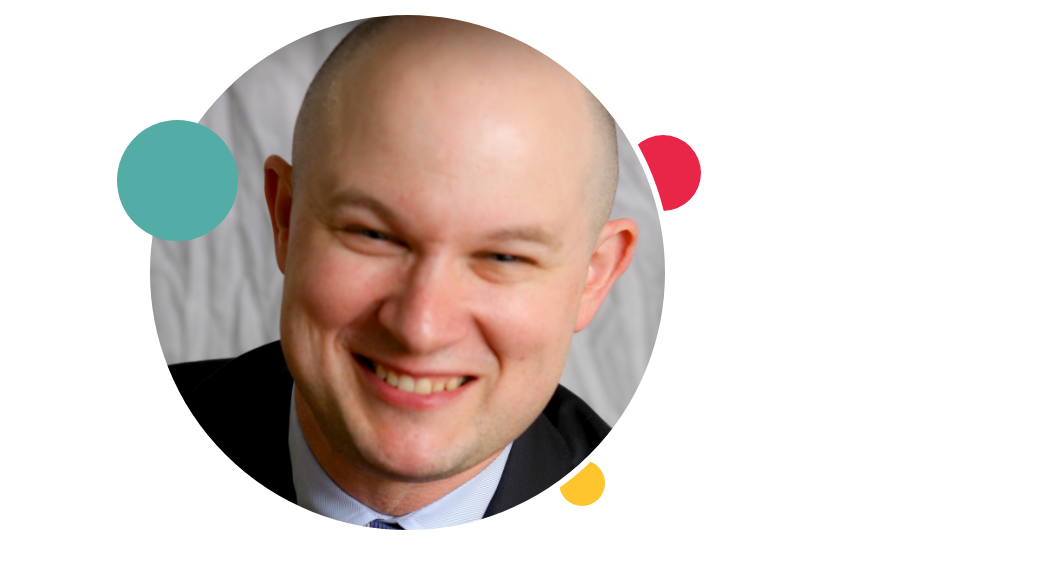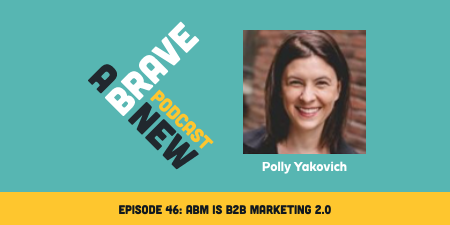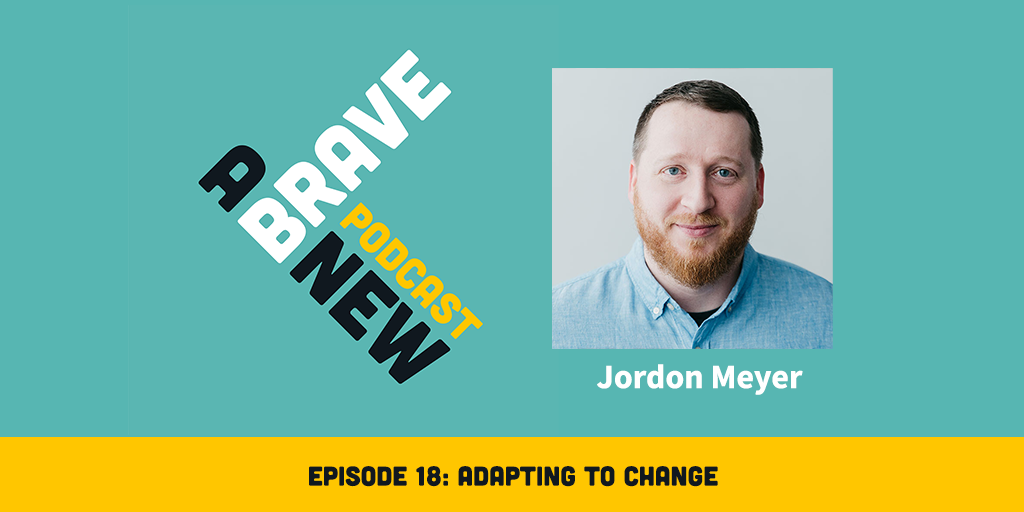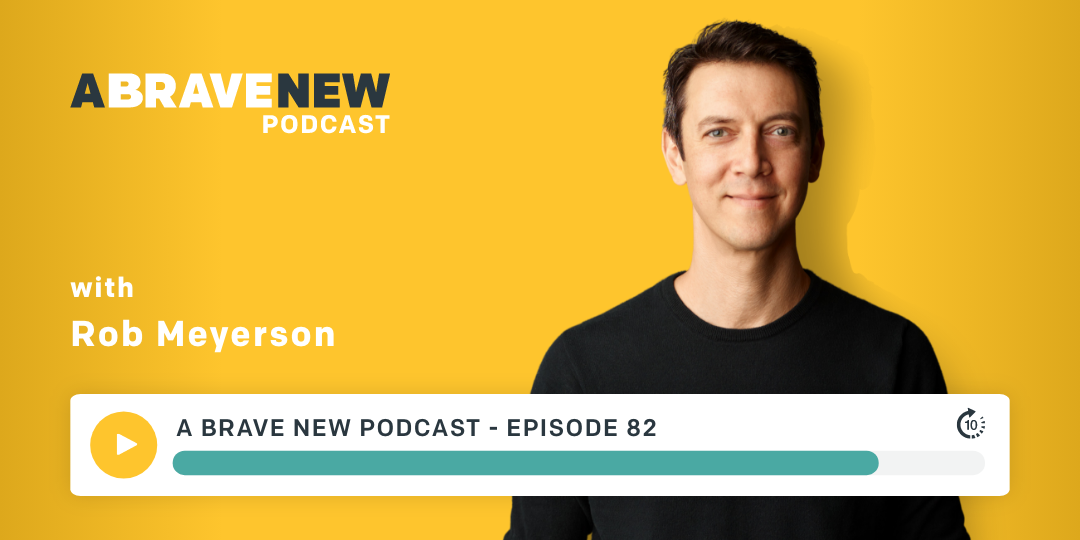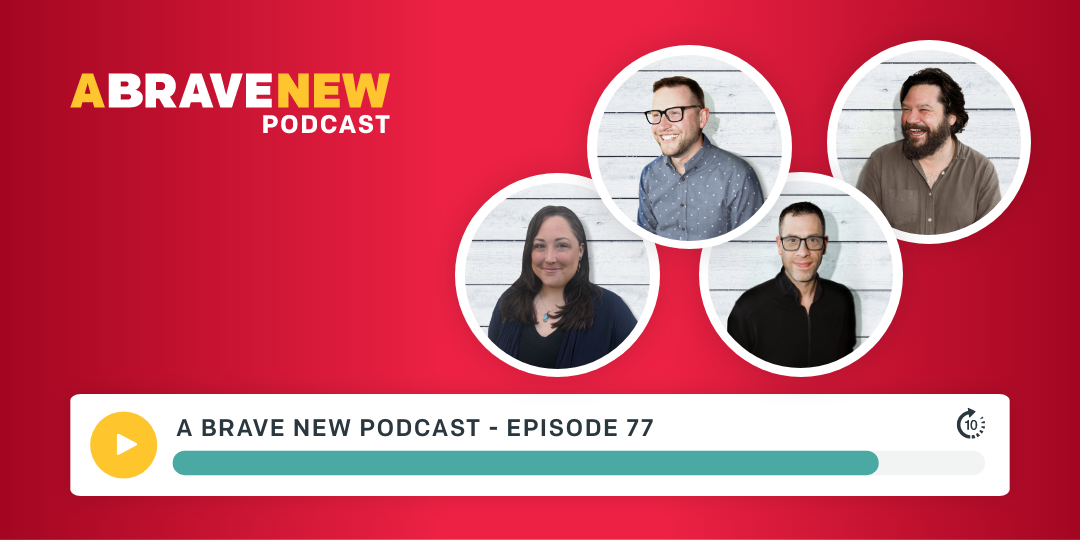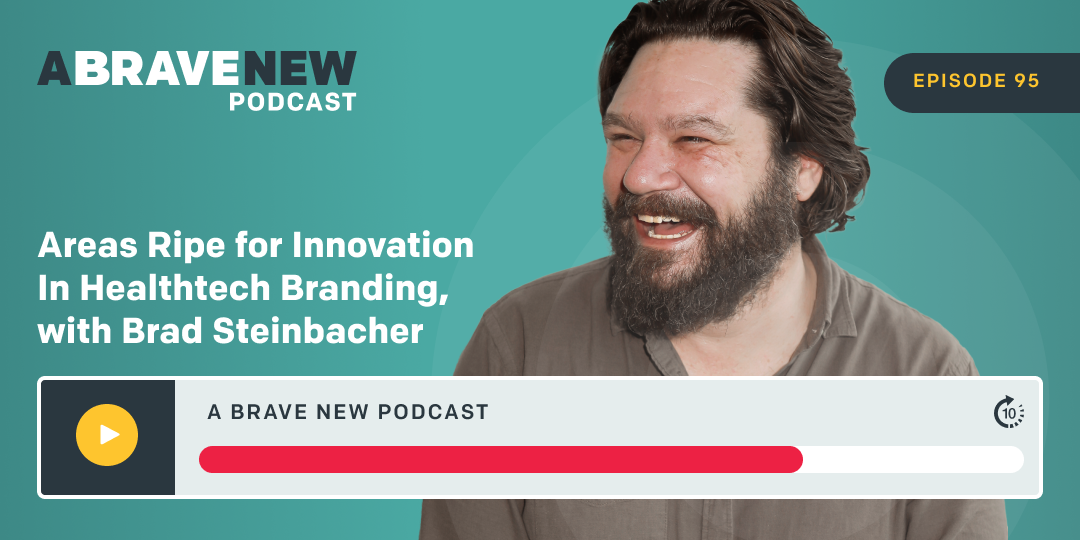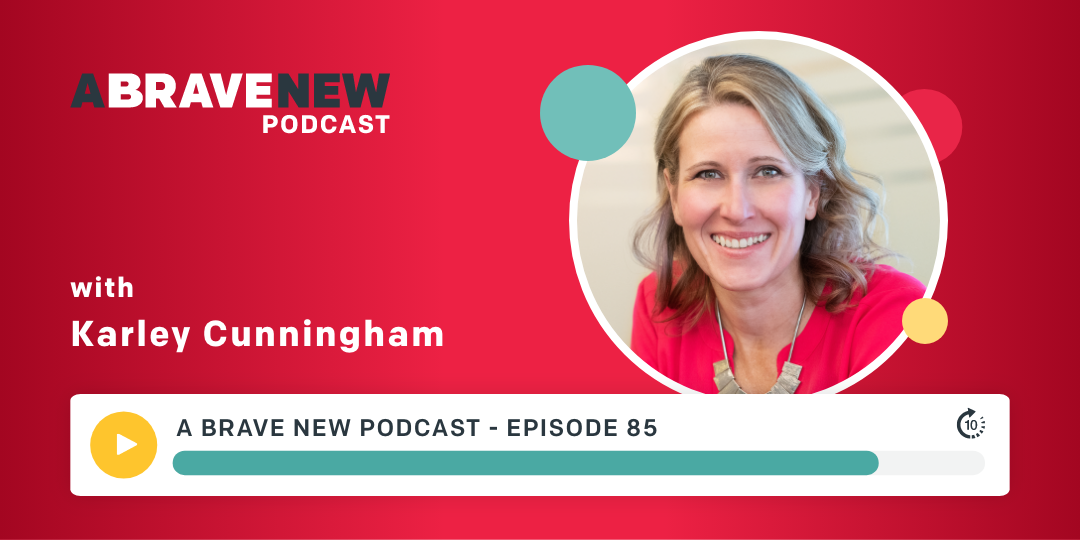Matt is President and Founder of Heinz Marketing with more than 25 years of marketing, business development and sales experience from a variety of organizations and industries. He is a dynamic speaker, memorable not only for his keen insight and humor, but his actionable and motivating takeaways.
Matt’s career focuses on consistently delivering measurable results with greater sales, revenue growth, product success and customer loyalty. He has helped organizations such as Amazon, Seagate, Morgan Stanley, The Bill & Melinda Gates Foundation and many others create predictable, repeatable sales & marketing engines to fuel growth.
Matt is a repeat winner of Top 50 Most Influential People in Sales Lead Management, Top 50 Sales & Marketing Influencers and Top 50 Keynote Speakers. Matt and his wife Beth live in a 105-year-old historic farmhouse they renovated in Kirkland, Washington and share with their three children, two dogs, two cats, and several chickens.
What you
What you’ll learn about in this episode:
- How Matt and his team at Heinz Marketing help B2B companies with long and complex sales cycles drive revenue through pipeline marketing.
- Why Matt believes it’s important to teach internal teams rather than take on the work as an outside partner.
- About the intersection between pipeline marketing and your brand. We also discuss how brands should influence and impact pipeline marketing.
- About the importance of focusing on both short term results and long-term brand equity.
- The value of relationships and human to human selling in all B2B marketing and sales.
- Why go-to-market motions are getting more lengthy and complex every day.
- How a go-to-market playbook can help you stay organized AND pivot when agility is needed.
- The relationship between corporate strategy and effective pipeline marketing.
- How to evaluate and integrate artificial intelligence into your strategy.
Additional resources:
- Josh Dougherty on LinkedIn
- Josh Dougherty’s speaking site
- Matt Heinz on LinkedIn
- Heinz Marketing’s Website
- A Brave New’s Website
Transcript
Josh Dougherty:
Welcome to a Brave New podcast. This is a show about branding and marketing, but more than that, it's an exploration of what it takes to create brands that will be remembered and how marketing can be a catalyst for those brands’ success. I'm Josh Dougherty, your host. Let's dive in.
Hello, and welcome to the show today. I am so excited to have you on board. Today, we're going to be talking all about B2B pipeline marketing and how you sell in a complex selling environment when the sales cycle is long, where you have a lot of people involved in the buying process. And to help have that conversation, I have Matt Heinz, the president of Heinz Marketing, joining me today, and I'm really excited about the wisdom he has to share. We're going to talk about how to manage through that process, what it looks like to build out a playbook for your pipeline marketing, how to be revenue responsible about your marketing and really focused on the things that are going to drive results, and then also how much we can incorporate technology like generative AI and others into that process when we're still selling to humans. And so we need to be building those human connections and those relationships that drive sales. So without further ado, I'd really like to bring Matt into the conversation and dive in.
Well, Matt, it's so good to have you on the show today.
Matt Heinz:
Hey, thanks so much for having me. I'm looking forward to this.
Josh Dougherty:
Awesome. Well, as we dive in, we're obviously going to get into a lot of talking about B2B pipeline marketing, how it's going, how go-to-market motions are working. But I'd love to give you a chance to just share a little bit about your story as we get started, tell people about your career path and what you've been up to.
Matt Heinz:
Well, thank you for that. Some people have heard from me before. This has been a giant mistake, Josh. I was a political science and journalism major at Udub. Go Huskies! I ended up at a PR firm and then ended up at Microsoft and then ended up, after that, marketing for a couple of startups here in Seattle and eventually decided that I wanted to try to do my own thing. I learned to really enjoy B2B marketing in particular and really saw this distinction between revenue responsible marketing in B2B and what I still refer to as arts and crafts—which, 15 years later, is still a big part of marketers that just do a lot of things that seem superficial and vanity metrics that don't really go anywhere and don't drive value for the business.
So I decided to try to do that on my own, just me a laptop and a bus pass to start, and we're about 15 and a half years in and grown a little bit since then, but continue to just try to have an impact on helping marketing organizations embrace revenue responsibility and really have a predictable revenue and pipeline impact on their companies.
Josh Dougherty:
Totally. I was laughing when you said it's a giant mistake. I was a history and Latin American studies double major, and here I am working in branding. So it just happened that I ended up working as a copywriter at an agency earlier in my career and off I went. So it's pretty funny how it goes.
Matt Heinz:
It happens.
Josh Dougherty:
So at Heinz Marketing, you guys are all about that B2B pipeline generation. I'd love to have you share a little bit about the type of clients you typically work with. What are the specific niches you're trying to focus on day to day?
Matt Heinz:
Yeah, all B2B, the more complex the buying process, the better for us. We find that if you've got long complicated buying and selling motions, that's what we're good at, and creating more predictability and repeatability out of outcomes that you want from those programs. It's becoming harder and harder to orchestrate even internal selling motions when you've got multiple marketing channels working together. You've got sales and marketing trying to integrate and coordinate better than they ever have, and then you've got these complex buying committees and buying journeys that your buyers go through. There are so many moving parts that I think that what works breaks down very quickly when you try to scale that as your company grows. And so I think what we're best at in the world is strategy process; playbooks of taking those complex sales cycles and creating repeatability, predictability, and scalability of outcomes of revenue pipeline; and closed business outcomes from those efforts.
Josh Dougherty:
Yeah, makes sense. And I think that's something that it's just hard in-house to develop those skills when you're dealing with one business versus you guys can look across numerous enterprises and see what's working and what's not, so it helps you.
Matt Heinz:
Yes, yes, and yes, it can be hard to do that internally when we've got a pretty strong set. We've been doing this for a long time, we've got a lot of benchmarks of what makes it work. Every company is unique. I think that revenue responsible marketing needs to be a skill internally in an organization.
Josh Dougherty:
Agreed.
Matt Heinz:
I think building those strategy process playbooks, we can help accelerate that and catalyze getting that done, but I think of us as a teaching organization as well where we're not the ongoing agents you need to rely on as a crutch to get that work done. We want to teach companies how to do it and how to make that a muscle that they have internally that becomes an asset for the company as well as for the marketing team as they continue to grow.
Josh Dougherty:
I love that because it's the same with brand work that we do. Once we finish a brand, we want someone to be empowered to own and manage it because if it's an external agency managing your brand forever, it's never going to become something that you own deeply.
Matt Heinz:
I think that smart marketers, and I could have been a lot better at this when I was internally running marketing, it is not a weakness or a crutch if you look outside to get ideas. It's hard when you stare at your same four walls to continue to stay on top of what's happening. So leveraging agencies, leveraging consultants, great, and there may be some specialized things that ongoing you're like, "Listen, I need ongoing help with these things and it's not as efficient for us to do it internally." That's fantastic. But I think that to constantly know that there are new things happening, I know we'll get to some of this, but we see this in AI significantly now. We see this in sales motions.
People are completely rethinking what the BDR and SDR function is. It is dramatically different than what it was even just two years ago, and if you have a large BDR team, it can be hard to steer that ship in a different direction, but a lot of companies are literally blowing up or starting from scratch and doing something completely different with that function and seeing dramatically different, better, greater results as a part of that.
Josh Dougherty:
I think it's a great segue. Let's dive into the deeper conversation. I'm really excited to talk about pipeline and revenue responsible marketing as you talked about because as a branding person, I think sometimes those critical conversations about who you are as a brand and how you want to show up through work that you're doing in pipeline is the opportunity you have to either make a big, positive impression or make a negative impression. I wonder if you have thoughts about that intersection between representing yourself in a unique way and the marketing motions that you're working on with people. How do those things intersect?
Matt Heinz:
They have to work together. I think in B2B, we have over rotated towards, "What have you done for me lately? How does this blog post generate pipeline?" And we can't look at every single thing in marketing and say, "What is it going to do to hit this month's number?" At some point, you need to do things that are going to help hit next month's number. At some point, as your business grows, you need to think about, "Okay, I am funding the pipeline this year, but what am I doing to fund the pipeline with next year?" It may not be lead generation. It may be brand building, it may be content development, it may be community management. I talk a lot about the difference between rented land and owned land. The idea that if you need business right now, you're going to have to rent land from someone that has attention of your prospects.
It could be Google, it could be a trade publication, it could be an industry conference, but these people already have the attention of people you want to sell to. You have to pay them a premium for access to that. What would you do? What could you do if you wanted to have owned land, if you wanted people to come to you on a regular basis because you've got something intelligent, you've got something interesting to give to them? That is not a this month ROI conversation, but the companies that invest in it end up spending significantly less on media, and they're spending significantly less on rented land. In fact, people pay them for access to their audience. It completely flips the model, but that takes a level of patience and precision and trust and forward thinking.
Look, it's hard when your business is growing. It's hard when markets are tight. It's hard when you're just trying to make this month's or this quarter's number. But it is not sustainable to have that short-term mentality, "Okay, get through this week. Okay, get through this week, get through this week." You can't stare at the future one inch in front of your face, you've got to be more forward-thinking than that.
Josh Dougherty:
What do you think are the organizations that are most successful at that? Are there commonalities amongst organizations that are able to balance that short-term versus long-term thinking?
Matt Heinz:
Yeah, there are. I think you look over the course of the last 10 plus years in B2B marketing, I look at HubSpot as a phenomenal success story in doing that. They became synonymous with Inbound. They created a conference literally called Inbound. Their user conference became a go-to, a must go-to for people in their industry. They created an online community and a content machine that generated traffic for them. They became the source. Marketo did that as well, right? Marketo when they first launched, John Miller is a master at doing this, where he basically creates the category, creates a ton of content to help people understand how to capitalize on the category, and then they created their Marketo conference. It went well beyond what Marketo was.
It was not just a user conference, it was a community. Salesforce has done a phenomenal job at that. I would say Gong in the tech space has done a great job of that. More recently, 6sense, I think, is doing a really nice job of that with their community, with their content, with their events. But all of those motions take time, and all of those motions take a little foresight as well where you say, "Okay, we're investing in a user conference. We're going to get everyone doing account-based marketing together, and you don't have to be a 6sense customer. You come to our conference."
Okay, well, what's the ROI? What pipeline did we get out of that? So those can be hard questions to answer, but I can also tell you that when you build a community, when you get people together, when you make connections amongst your customers as well as between your customers and your people, those connections are real. It gives you the benefit of the doubt if things start to go sour instead of people just ghosting you and not renewing. It's a very material difference. That is a huge competitive advantage. And if you look historically at case studies of companies doing this, I'm referencing the success stories, the Marketos, the HubSpots, the 6sense. On the other side of that fence, I can tell you the companies that were looking at the future one inch in front of their face, I don't really talk about them anymore.
Josh Dougherty:
Yeah, totally. I think another commonality for all those companies you brought up too is there is a cross-discipline integration. So it's not just pipeline, it's not just brand building, but it's also product. Because you talk about all those companies, there's an extreme dedication of also building the best product at the same time and keeping that in sync with the community that they were building and the space that they were working in and all those things.
Matt Heinz:
Well, you're investing in relationships, right? You're investing in relationships that sustain. There are two keys to that. One is the relationship that the buyer or the user has with the company and the brand. I think back to the days when Moz, which used to be SEO Moz, they would've Moz Con, they'd have it here in Seattle, and it was like an SEO festival. It was not really a conference. It really was more like a festival, and it was people getting together and just enjoying being together, building these bonds, and they felt this tight bond with the company. And when they have that type bond with the company and with each other, if you leave the company, if you no longer use the company, you're not just leaving a software, you're leaving friends.
And I remember back in the Eloqua days, people that were in Topliners community, they would literally say that. "I don't want to leave this group. This group has been a lifeline for me." How do you defend against that if you're a competitor? You don't have enough features to compete against that.
Josh Dougherty:
No, absolutely. That's such a good point, and I think this is something that we always miss in marketing, B2B marketing specifically, is that it is about that relationship. It's about the human connection. At the end of the day, everything we're trying to do is to build tighter human connection versus be product and feature marketers. Right?
Matt Heinz:
A hundred percent. Absolutely.
Josh Dougherty:
Let's talk a bit about pipeline. One of the things we talked about in our prep conversations and in conversations we've had in the past is that go-to-market motions are really evolving right now and they're getting more lengthy and more complex. Can you talk a little bit more about what you're seeing in that area?
Matt Heinz:
I think especially over the last year and a half, we're seeing buying cycles lengthen, and I think there are a couple of factors going into that. One is that there are more people involved in the purchase decision than there ever was before. We saw this back in 2008, 2009. It was right around when I started where there were decisions that a functional business unit leader could make, and then all of a sudden in the 2009 recession, a finance person wanted to be involved. And they wanted to be involved, but they didn't really want to get too deep into the conversation. "I care about this HR database tool you're about to buy, but I don't really care to know enough about it." And so it really slowed a lot of things down. We're seeing that again now where just decisions are more deliberate, which takes longer in the selling cycle to be part of.
There's a lot more, not just committing to change upfront, but getting to the end of the sales process. And that justified the decision point, not the fear of the fear of missing out, but the fear of messing up that everyone has, especially when you're like, "Listen, budgets are tight. We're not funding three to five things. We're funding one to two. Are we sure this is the right thing? Are we sure this is the project we should be focused on, let alone the vendor we should be going with?" So it's not just the length of the sales cycle, it's not just the number of people involved on both buyer and seller side, it also requires a greater, tighter precision of message at each stage of that buying process. If you're hoping that people are going to do the value translation on your product for themselves, that is a recipe for being ghosted late in the process.
If they're not committed to an outcome, if you have not defined and reframed the value of that outcome for each member of the buying committee so that they're all in consensus to say, "Yes, we need to solve this problem," who they solve it with becomes a foregone conclusion if they're committed to change and committed to the outcome it represents. The companies winning right now that are seeing predictable results in these long complex sales cycles, they understand the steps it takes, they understand the complexity of the buying journey, the buying committee, and they are committed to the right message at the right time to build that consensus and keep that commitment to that consensus through to the close.
Josh Dougherty:
Yeah, smart. And if we talk about finance, that's a classic one that swoops in that doesn't want to be involved until the end, and then you're looking at dollars and cents. How are you making those people—
Matt Heinz:
Or procurement, right?
Josh Dougherty:
Yeah.
Matt Heinz:
Sometimes you think procurement's 90% of the way through the sales process, and as far as this process goes, that might be true, but from a timeline standpoint, you might be at 50% now, right?
Josh Dougherty:
Totally.
Matt Heinz:
Because now the procurement department, which some call the sales prevention department says, "Oh, well, we already have stuff that does this," or, "Oh, we can't spend this kind of money." And so you don't get to talk to procurement at the beginning of the sales process. That's probably not going to happen. But if you have a buyer that is your champion that is committed to an outcome, early in the process, you can say, "Okay, when we get to this point, what can you tell me about what your procurement team wants? What are their priorities? What are their business objectives? What are their pet peeves?" And either can you start to circulate this with them now to condition them for what's coming or just help me better sell it when we get to that point to get to a yes faster or easier?
Josh Dougherty:
Totally.
Matt Heinz:
So knowing that's part of the process and knowing in each company where that's going is also a buying signal. Earlier in the process if you're like, "Hey, listen, I know we're still trying to make a decision here, but we'd love to have a sense for once procurement gets involved, what's that like?" If the prospect says, "Yeah, yeah, yeah, let's get that going now, and I know getting approved vendor status takes a while, and if you're willing to lean in, we can get that going in parallel with walking down the line," that's a buying signal.
That's a signal that they're like, "Yes, we want to keep going." But if they're like, "Well, let's hold off. I don't want to waste your time or ours unless we get a little further along," they're not convinced enough, they're not committed to change, they're not committed to you yet. That is also a signal that you have more work to do. So having that conversation upfront not only helps you once that point gets there, but it gives you some evidence that you're on track or not.
Josh Dougherty:
And it's all about asking those smart questions ahead of time so you can get the responses and then read between the lines on them.
Matt Heinz:
Smart questions and hard questions. Sometimes if you don't have a conversation around budget, every company has budget. Unless they're bankrupt or out of business, they have budget. They're just choosing to deploy that elsewhere. So is that elsewhere representing a problem that is more important or more pertinent than what you're talking about today? So very few companies you're going to call and say, "Oh, we've got this huge pile of cash just sitting over here wondering what we're going to do with it." Unless you're at the beginning of a budget cycle, if you've got something new, they have to find that money somewhere. If it's an important enough problem, they will go find it. Have that conversation upfront and don't assume that they're going to just manufacture that money at the end of the process.
Josh Dougherty:
Yeah, absolutely. And with these longer buying cycles, there is a lot going on. It's taking longer to close things. How do you stay agile and iterative in a process like that?
Matt Heinz:
Well, I think this is why having a playbook for complex selling is so important. When you have a playbook to follow, it allows you to be more creative and agile in each of those situations. The last thing you want to do is be winging it in each of those conversations. You want to know with this company, with this person, their role in the buying process, the stage we're at in the overall journey, here's the conversation we need to have right now to get to tomorrow to get to the next message. You know what that is likely going to be. And the better you know that, the more likely you can be agile and creative in the moment. It's like an actor. If you're worried about remembering your lines, all your brain is doing is trying to get your lines out correctly.
But if you memorize your lines, if you know the script well enough, that's just second nature to say the words, now you can act. I find the same thing goes with preparation for selling motions. One of the nice things about marketing is we can pre-write our websites and our social folks and everything else. Some of this is helping with that person-to-person, the human-to-human connections that our sales teams are having. The better they have a playbook to follow, the more they can live in the moment. And it's not just about the playbook. If you hand someone a script and say, "Off you go on stage," you don't want them to practice on opening night, right? So give them time to practice and role playing. I guarantee you'll not only have a sales team more effective and more comfortable with the message, but in that role playing, you'll discover places to improve the message in general as well. So that's an important part of the process that a lot of people miss.
Josh Dougherty:
And in those playbooks you're developing, I'm assuming you're building out spaces to identify when a deal is stalling, and there's a difference between a deal stalling and it maybe is still going to close versus it's stalling and you need to stop focusing there. How do you work with people to help discern when it's time to move on to the next effort versus trying to keep pushing something that's just moving a little bit slower?
Matt Heinz:
Yeah, I mean sometimes it is the hard questions. If you've been selling for even a short period of time, you've had hot and heavy prospects that just all of a sudden go dark. And sometimes it's because something happened that made this lower priority, and they just are focused on that. You would think it'd be polite to follow up, but sometimes people just get busy and they work on other things and their entire drill mode and their life happens. And speaking of life happening, it could be there was a death in the family or a bunch of shit is going down somewhere and they just haven't had time to focus on this, so don't disqualify them too quickly. But if someone ghosts you and you thought you were having a good conversation, go back and find the last time you confirmed a need with that prospect.
It's not about buying your software or service, it's about solving a problem. So confirming that problem still exists, pointing out in some cases that the clock is ticking towards actually solving that problem, that waiting is actually making things worse. It's a good way to at least get someone to say, "Yeah, we understand that, but we just have other things and we're going to have to take that risk." Or, "You know what? Thank you for your reminder." I've had plenty of prospects to us and with clients to say, "Thank you for being my conscience. I am out of control over here trying to put out fires, but thank you for keeping me accountable to these big problems I have. Let's talk next week." I think that there are still going to be people that ghost you, but if you are rooted in need, if you are rooted in prioritization, if you are rooted in the why, you are not a belligerent salesperson, you are a trusted advisor keeping someone focused.
Josh Dougherty:
I've been selling for 10 years for my agency. It's the same thing. People do thank you frequently for just saying, "Thanks for staying on top of this. I'm just trying to keep from drowning on my side." So one thing that I think is really interesting that you talk about is the linkage between go-to-market and corporate strategy and how go-to-market when you're building out a playbook often leads to conversations around like, "Oh man, our corporate strategy isn't as dialed as it should be." Can you share a little bit about the link between those two things and how organizations can maybe work on firming up their corporate strategy when their go-to-market reveals that maybe there are some cracks in it?
Matt Heinz:
Yeah, I've been thinking a lot about this lately. Our work fundamentally is all around what I think of as critical pipeline fundamentals. Having real clarity on your ideal customer profile. What's the subset of the subset of the companies you should be selling to, and who are the people in that organization that you need to sell through as well? So things like that. And then how you operationalize and activate that in your organization. Those are fundamentals. There's a lot of disagreement in a lot of companies about what those are. I talk to CMOs all the time who say, "My sales team and I disagree on who we should be selling to." Or I have a CEO who says, "Don't focus, sell to everybody. We need to close more deals. We need to sell to everybody." And so the more disagreement you have at that level, the more you need to get back down to two fundamental areas.
The first literally is corporate strategy. Forget sales and marketing for a second. Where are we as a business and where do we need to be moving forward? What are our funding sources, and what do those sources imply about how we're going to go to market? If you're in product market fit mode and you're just trying to get to your series B round of funding, you're almost by definition willing to spend more money to acquire those customers because you're trying to prove that those customers will invest in you, and those logos are going to help get you that next round. Well, if you're a private equity owned, you're probably a lot more focused on profit and EBITDA, and all of a sudden the math changes. So who are your funding sources? What are the shareholder objectives right now? What is the implied exit strategy? What is the overall growth plan to get there?
These don't imply what your sales script should be or what your BDR plan is or even what industries you're selling into yet, but what is the business here for? Then you can get into market opportunity, and you can start talking about things like category maturity. You can start talking about the maturity of your competitor set. You can start talking about the industry mindset. Are you in an industry where the need to change is mature, where you're doing more flips from existing installs in terms of net new install of a software that people hadn't used before because the technology didn't exist? Taking your corporate strategy and then thinking through and being really honest with yourself about the market opportunity, not a spreadsheet, cause it can say anything mode, not assuming that the entire industry is going to be your early adopters. So the point is to get back to some of those fundamental parts of the business where you can get all the heads nodding around the table, the go-to-market leaders, everybody on the c-suite, the board, the investors, and say, "We agree to these fundamentals."
From there, you can start building. So even when you're talking about market opportunity, you'll have people that disagree about how mature the market is, how mature and ready the competitors are, how tight the status quo is held, and what you need to do to pursue that as well. But the more complex B2B gets and the more complicated these motions are to be successful and predictable, the more tension we're seeing amongst those go-to-market teams, the more misalignment we're seeing between sales marketing and sales marketing c-suite board. And so going back to those fundamentals and aligning there first is going to make creating consensus and alignment around the activation a lot more successful. So we're spending a lot of time now sort of thinking through how to help our clients have those conversations internally. These are not always easy conversations, but they are necessary to create the kind of momentum and velocity you need as a business to grow.
Josh Dougherty:
And so imagine someone's like, "I don't want to have those conversations. Let's just go," what is the risk that they're running there?
Matt Heinz:
I'm sure anyone in the services business has had a client tell you, "Well, I could write an email in five minutes. Let me just type something out and let's just send it." Okay, sure, I can do that too. However, all those things we just talked about, how is it going to land? Part of the problem we have, and AI is making this worse right now, is that it is getting faster, easier, cheaper to create and send content. AI is making it so that you can technically replace your BDRs by just having AI do the research, AI create the content, AI send out a bunch more emails, but the problem is not faster, cheaper. Because the recipient of those messages has no more time than they did a millennia ago. They may have less because we're all doing more things. We're committed to more things.
I've got to run off mid-afternoon today to a middle school track meet, so my time is more condensed than it ever was before. So how are you going to get something through to me? It's not by shoving more mail in the mailbox, it's by having something more interesting to say. And so what you say in the right moment in the time based on what's going on is really, really important. We used to talk in sales circles and BDR circles and even lead follow-up in terms of talked about speed to lead. I think speed to need is more important now. The context in which your message is received based on the context of what that prospect is dealing with and worrying about right now is extremely important and has a shelf life because later today or tomorrow or next week, there'll be a new fire drill. There'll be something else that is pressing. So your ability to strike while the iron's hot on some of those messages is really, really important.
Josh Dougherty:
Yeah, I think you've highlighted a really important risk with AI that we think about all the time of, yeah, it does go faster. You can create stuff, but we've almost forgotten that we don't have computers reading the messages at the other end of the thing. So it doesn't matter if the stuff isn't good or isn't relevant, it's not going to be helpful across the board. Let's transition to talking a little bit more about AI now. That's one of the big risks you just go to. We want to create a bunch of bulk of speed. We're going to quickly replace some human-driven actions with a computer doing those now, and it is a good way to create efficiency, but it might reduce effectiveness because it's not speaking to need as much. What are some opportunities and risks that you've seen with AI adoption? I'm sure you're having these conversations every day just like I am with clients.
Matt Heinz:
I think the exciting and terrifying approach that I've come to by reading a lot of people that are way smarter than I am is just assume AI can do everything and know that it probably can't do most of it very well, but know that it's getting better every day very, very quickly. Things that are very template driven, things that are very process driven that don't need refinement or nuance AI is getting better at doing including helping you identify and draft an initial point of view for someone. But here's the difference. If I am building cars and every car is going to be exactly the same, I can eventually replace assembly line workers with robots and robots can build that car.
But then let's talk about beef brisket. So there are reams and reams of data and information instruction on how to cook a brisket perfectly, but every single brisket is different. Every cow is different and every brisket is different. So you have to uniquely apply reams of best practices to each one of those briskets. I think it's going to be a long time before AI can replace the work we do as consultants, as marketers, as salespeople, to apply a set of best practices uniquely to each situation, to each client, to each company, to each individual. AI will make it far easier to prioritize who those people are. One of the biggest changes we're seeing already in BDR functions is instead of making a hundred calls a day and just hoping you talk to the right people, you're going to make 12 calls today to exactly the right people with exactly the right message.
And AI is going to increasingly tee that conversation up for you. But I can tell you just from my own experience, my own campaigns reaching out to CMOs, 80% of the responses I get are to custom LinkedIn direct messages that you cannot scale very easily, and the other 18% are literally responses to phone calls and voicemails that I leave for people. No, the phone is not dead. The phone is very much alive. It is faster and easier to just send a crap ton of emails this afternoon.
We did a couple CMO breakfasts this week, and it would be really easy for me just to take the people that attended, write one message, send it out through Marketo, everyone gets the same message. But I'm taking the time literally in front of me before we start, I've got a list of the people that showed up and I'm just sending quick individual messages. And then some of them that I think might have a higher likelihood of working with us are going to get a phone call from me as I drive down to this track meet later today. And it's going to be quick. "Hey, thanks for coming out. Really enjoyed this. I know you mentioned X. Would love to talk to you about that more." That's how you get a response. So the job here isn't to do things faster, cheaper, more efficiently, the job is to do things more effectively, and effective means response. And until robots sell to robots, which, Josh, might be coming someday, I don't know.
Josh Dougherty:
It may be.
Matt Heinz:
But we still live in this world, and we still are managing the robots as tools, and we still decide who we want to work with. We don't always work with the most efficient vendor. A lot of times we work with the vendor that appreciates us better, that respects our time. We don't always buy our favorite. Sometimes we buy from those we like. That is a human condition that is not going away anytime soon.
Josh Dougherty:
Absolutely. And I think this goes into the last thing I wanted to talk about before we wrap up this conversation was the tension between overall AI adoption strategy and simply adopting a tool here and there, because I agree with you, the whole process isn't getting taken over by robots here and now. So it's more about identifying what are those point-to-point tools that you can use that can make you more efficient along the way. And I know I talk about in my practice with a lot of people who are like, "Oh, yeah, we just added this in and this in and this." And I'm like, "What are you trying to achieve here?" Because at the end of the day, you're going to come up with a disjointed thing where you're spending thousands of dollars a month on software that you aren't really sure how it's actually working. So how are you having that conversation with people to align around a strategy for AI adoption versus just a pick and choose the sexiest object that's out there that they've heard about?
Matt Heinz:
Right after this, literally my next meeting after this is with someone who's getting into account base go-to-market motions, and they are equating account based with a specific tool set. And we've seen this for years. I want to do marketing automation. Which tool do I buy? I want to do social selling. Which tool do I buy? A tool is what you decide after you have a strategy and process, after you have an idea in place of what you want to accomplish. So a strategy has to happen first, and a strategy may totally change the tool that you buy. Back in the marketing automation days, if you would ask me what's the best tool on the market, pound for pound feature-wise, I can give you an answer, but that may be the wrong choice for the majority of people asking the question.
So I think about jobs to be done first. AI is not inventing jobs for you. AI is going to make some of those jobs either more efficient, more effective or automated for you in the background while you do more important other human things. So I would first think about the jobs to be done, everything from first draft copywriting, to copy editing, to industry research, to managing data, to building visual graphic, all kinds of other sort of first starts on things that you understand well enough to give the right prompts to get you what you want. It's not that different than, honestly, I think, and again, I'm not a creative brand person at all, but I would imagine if I tell you, "Build a better brand for me," and I give you no other feedback, if there's no creative brief, what the hell are you going to do?
The quality of the brief will impact the quality of the output. I've had this too where you say, "I want a rock. No, no, no, not that rock. No, not that rock either." What do you want? "I want a rock." Okay, this isn't going anywhere. Right? And so I think of the jobs to be done, but I think the input for that job back to those fundamentals we talked about, "Who am I selling to? What do they care about? What message do they need to hear right now at this moment, at this stage of their journey internally, externally?" That's critically important. There's no amount of tools or robots that are going to help you be more successful unless you figure that out first.
Josh Dougherty:
Totally. Awesome. Well, I'd love to close out the conversation today. You've shared a ton of wisdom, and I really appreciate that. I'm sure our listeners are going to appreciate it as well, but I'd love to close it out by asking you a question I ask everyone. I'd love to hear about your superpower. What's the thing that you think makes you stand out from the crowd that you do better than folks?
Matt Heinz:
I really do hate questions like this because I just don't like talking about myself, but I think I'm getting better at just empathy, to be honest. Just really asking questions about people and then listening and not having to have an answer. Empathy is not providing solutions. Empathy is saying, "Damn, dude, that really sucks."
Josh Dougherty:
Totally.
Matt Heinz:
I'm really sorry that you're in that space. And 95% of the time, that's what people want. They just want someone that'll listen, someone that'll see them, not, "I have an answer for you," but I see you.
Josh Dougherty:
Absolutely.
Matt Heinz:
And I think that's a powerful thing that isn't prevalent enough in our society, and I think I'm getting better at that.
Josh Dougherty:
Nice. Well, how can people connect with you? What's the best way for them to keep up on what you're working on, the stuff that you're thinking about or even get in touch with you if they need help perfecting their pipeline work or building a playbook?
Matt Heinz:
Happy to talk to anyone anytime. It helps me sharpen my saw just to have conversations with folks that are challenged with this, whether or not we end up working with them or not. I'm an open book sharing everything that I see and learn along the way. So feel free to reach out to me directly, matt@heinzmarketing.com. Find me on LinkedIn. I post a lot of content videos on LinkedIn quite a bit. Heinzmarketing.com, I used to write our entire blog, now I write zero of our blog, and it is candidly way better. The quality and quantity of stuff on our blog right now relative to revenue responsible marketers I'm so, so proud of what our team is building there. So all free, no forms, just whatever you want. Just go up there and get it, and hopefully that's valuable for you.
Josh Dougherty:
Awesome. We'll stick all that stuff in the show notes so people can easily find it. And, Matt, I really appreciate the conversation today. I think you're doing really important work, and I thank you for being so open about how you approach it because I think it's super helpful to folks.
Matt Heinz:
Thank you very much. I appreciate that. Yeah, thanks for the opportunity.
Josh Dougherty:
All right, thanks for listening to this episode of a Brave New Podcast. Go to abravenew.com for more resources and advice on all things brand and marketing. If you enjoyed this episode, show us some love by subscribing, rating and reviewing A Brave New Podcast wherever you listen to your podcasts. A Brave New Podcast is created by A Brave New, a branded marketing agency in Seattle, Washington. Our producer is Rob Gregerson of Legato Productions.
Similar Articles
OCT 11, 2021

The Beginner’s Guide to Generating Inbound Leads
Marketing doesn’t have to be painfully intrusive, like getting yet another telemarketing call right when you sit down to dinner with your family.
OCT 11, 2021

The Beginner’s Guide to Generating Inbound Leads
Marketing doesn’t have to be painfully intrusive, like getting yet another telemarketing call right when you sit down to dinner with your family.

